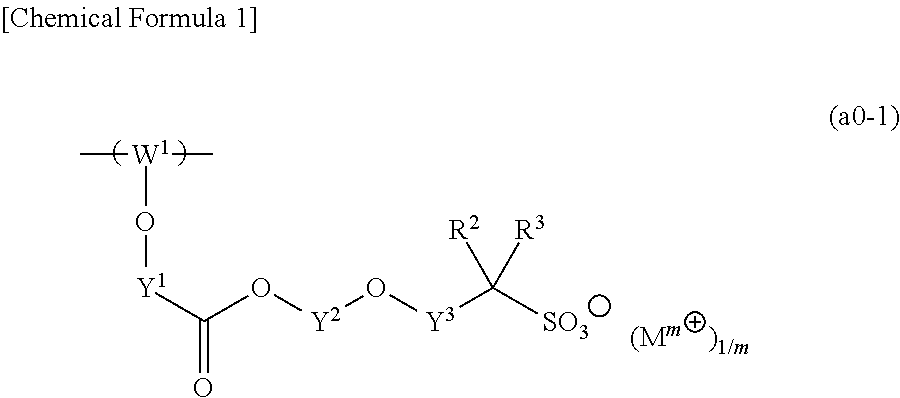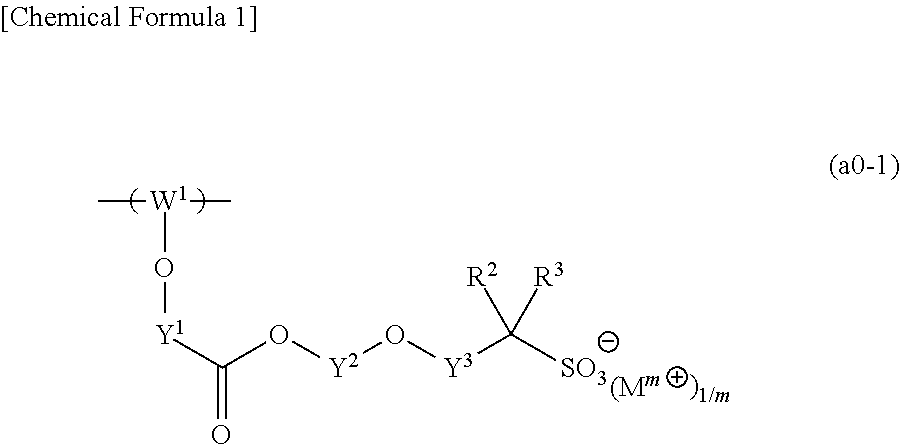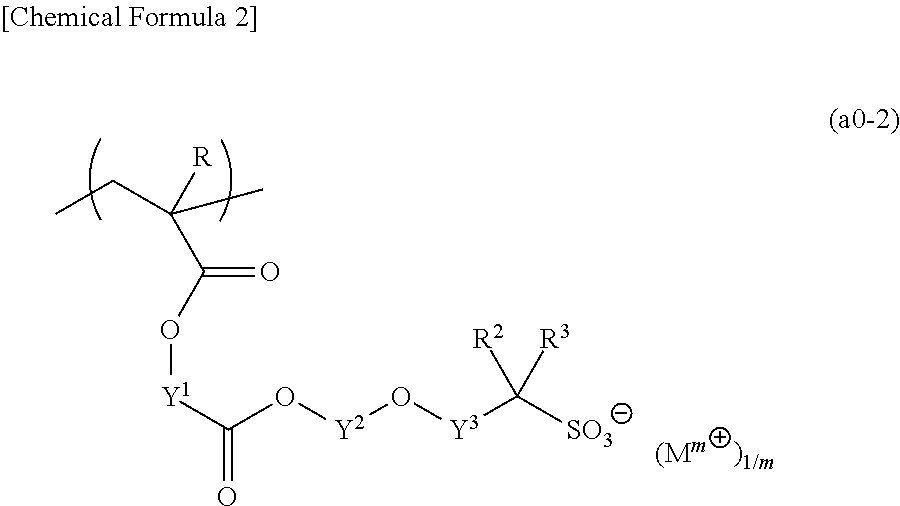Resist composition, method of forming resist pattern, polymeric compound and compound
a technology of resist composition and polymeric compound, which is applied in the direction of photosensitive materials, instruments, photomechanical equipment, etc., can solve the problems of non-uniform line width and space pattern, deformation of resist pattern, adversely affecting the formation of very fine semiconductor elements, etc., and achieve excellent lithography properties
- Summary
- Abstract
- Description
- Claims
- Application Information
AI Technical Summary
Benefits of technology
Problems solved by technology
Method used
Image
Examples
examples
[0651]As follows is a description of examples of the present invention, although the scope of the present invention is by no way limited by these examples.
synthesis example
Synthesis of Compound (1)
[0652]10.07 g of compound (I) and 10.00 g of compound (II) were added to 50.00 g of acetonitrile (hereafter, referred to as “AN”) in a nitrogen atmosphere, and cooled to 5° C. Then, to the resultant was gradually added a trimethyl amine solution obtained by dissolving 8.36 g of triethylamine in 25.07 g of acetonitrile, and a reaction was effected at 5° C. for 1 hour. After the completion of the reaction, the reaction solution was filtered, and obtained filtrate was concentrated. Then, 240 g of pure water was added to the residue, and the aqueous phase was washed with diethyl ketone twice, thereby obtaining 15.71 g of an aqueous solution of containing compound (III).
[0653]240 g of dichloromethane and 12.05 g of triphenylsulfonium bromide were added to the aqueous solution, and a reaction was effected at room temperature for 5 minutes. After the completion of the reaction, the aqueous phase was removed, and the dichloromethane phase was washed with pure water,...
PUM
 Login to View More
Login to View More Abstract
Description
Claims
Application Information
 Login to View More
Login to View More - R&D
- Intellectual Property
- Life Sciences
- Materials
- Tech Scout
- Unparalleled Data Quality
- Higher Quality Content
- 60% Fewer Hallucinations
Browse by: Latest US Patents, China's latest patents, Technical Efficacy Thesaurus, Application Domain, Technology Topic, Popular Technical Reports.
© 2025 PatSnap. All rights reserved.Legal|Privacy policy|Modern Slavery Act Transparency Statement|Sitemap|About US| Contact US: help@patsnap.com



